2010 Gumpert Apollo - Click above for high-res image gallery
Now this is a fascinating little creature. A compound of contradictions that goes by the unlikely name of Gumpert Apollo. The first word in its name is in allegiance to Roland Gumpert, practically the father of Audi's Quattro system – yet this creation is rear-wheel drive only. The second name is for the Greek god who had nothing to do with speed or handling prowess, and a space mission whose only intersection with cars was a lunar rover. The Gumpert Apollo's badge, however, depicts a Griffin, a creature with the body of a lion and head and wings of an eagle; an Indian or Central Asian creation that has essentially no connection to Apollo.
Nevertheless, these ostensible discrepancies live together beautifully in the compact body of the Gumpert Apollo. The company's aim was racing, and two driven wheels are all that are allowed in most categories. Apollo might not have been the god of driving, but he did count victory among his oversight portfolio, something the Apollo vehicle is quite familiar with. And the Apollo space missions did represent, at the time, the ultimate in proven high-technology, while the Griffin, as a mix of the kings of beasts and birds, represents mastery of land and air. We got to drive it, and we have never found anything like it anywhere else on the planet. Our chosen words to describe it are these: Hoe. Lee. Cow.
Photos by Jonathon Ramsey / Copyright ©2010 Weblogs, Inc.
The S version of the Gumpert Apollo has only been beat at the Nürburgring and the Top Gear track by the Radical SR8, the Caparo T1 and the Ultima GTR. First, that means the Apollo showed its chunky, high-relief rear end to every other major and minor sports- and supercar on Earth. As for the cars that beat the Apollo's time, while all four are street-legal race cars, technically speaking, it's likely easier to register the EU4-approved Apollo in countries outside of the UK than it is to get paperwork for the others. The Radical, Caparo and Ultima lean far more toward the race side with their open canopies, purely functional cockpits, and lack of trunks and air conditioning. The Gumpert is a race car, but has a radio, navigation, air conditioning and power windows. And bumpers. And a trunk. The same Apollo has been used to win a race on the weekend, then used by the owner's wife to get groceries during the week. It'll be a while before you hear that about a Caparo.
The short story of the Apollo is this: Roland Gumpert wanted the most thoroughly engineered, no-compromises street-legal racer that would also be comfortable enough to drive daily. The phrase "no compromises" is difficult to fit into that brief, but 20 years of thought about how to do it has paid off well enough that it fits.
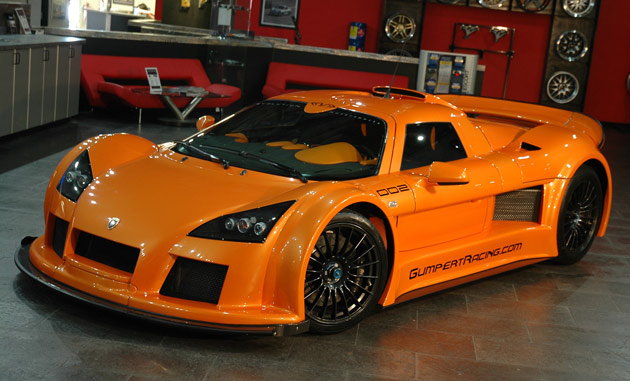
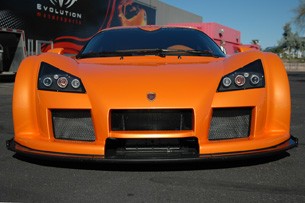
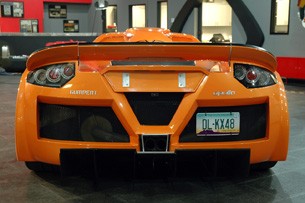
Gumpert began at Audi in 1969 as a test engineer, and by 1981 was the department manager of Audi Sport. Three years later he was the chief department manager for Audi's sports and special development programs. How did he go from running diagnostics to running a still-legendary rally program – and then winning four World Rally Championship titles – in just 15 years? By being the driving force behind the development of the all-wheel-drive Volkswagen and Audis, which led to the first Audi Quattro in 1980.
And the mid-'80s is when the Apollo was born as an idea. Gumpert was charged with creating the mid-engined Audi Quattro and worked to build a car with industry-leading aerodynamics. The car wasn't built as he envisioned it, but he had the desire to one day see it through. When he finished his Audi tenure in 2001, Audi tuner MTM's chief Roland Mayer asked Gumpert if he wanted to build a sports car. Gumpert agreed, on one condition: They don't build a show-circuit cocktail party plaything, but a real car that would go into series production.
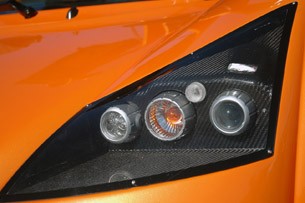
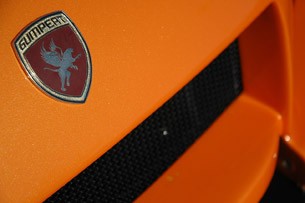
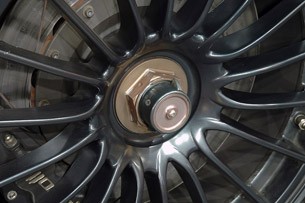

Gumpert Sportwagenmanufaktur GmbH turned on its lights in 2004, and two prototype Apollos were on the road in January, 2005. The car was meant to "distinguish itself by means of its phenomenal driving performance and the best possible aerodynamics" using "the best technology, the best engineering and car knowledge." Gumpert also intended that it "remain gorgeous," but we'll let you decide for yourselves. We like it – a lot – for several reasons.
To assist with the Apollo's development, Gumpert chose Hans Peter Fischer, whose company develops parts for sports cars, to be technical director. Having engineered solutions for the Porsche Carrera GT, Fischer is no stranger to getting the most from a piece of metal. The two wrapped the Apollo in a carbon fiber body that is concerned with one thing: getting as much air efficiently over and around the body, a little air through it and none underneath it.
Most of the air that passes over the running-board sized front splitter encounters only three disturbances on its trip to the back: the side mirrors; the roof-topping airbox that keeps the Audi-sourced 4.2-liter, twin-turbo V8 firing; and the tail, angled to keep the 345/35 ZR19 Michelin Pilot Sports stuck to the ground. The rest gets sent through body's interior air channels that send cool, refreshing breezes to the radiators flanking the front wheels, in front of the rear wheels and the brakes. Of the air that does make it underneath the car, most is immediately scooped up by vents near the leading edge of the completely flat carbon-and-aluminum-sandwich floor, and run over the floor to the rear. The result is a vehicle which, according to the numbers, can be driven upside down at anything above 120 miles per hour.
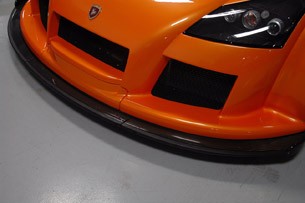
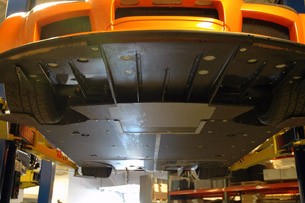
The body is hung on an aerospace-grade chrome-molybdenum steel tube frame that has been further engineered to serve terrestrial, as opposed to airborne, purposes. The science and the fit of it has been so finely tuned that it takes six weeks just to cut the set of tubes necessary to make a single Apollo.
The resulting torsional rigidity of the frame is such that it requires 40,000 Newton meters of force to be twisted one degree. That's roughly 10,000 more Newton meters than the previous standard, the Carrera GT and roughly 10,000 less than a Formula 1 car. Unless you're a top level racer or your ride is made of Wolverine's skeleton, you probably won't pilot anything stiffer.
The frame is wrapped around a chrome-moly passenger compartment that's further reinforced by a carbon fiber tub and a carbon fiber crashbox in front, allowing it to be certified by the FIA for a number of sportscar series. Keeping that unshakable poise from ruining your back, your teeth or your sanity is a custom-designed and thoroughly adjustable racing suspension, with double wishbones and twin transverse control arm pushrods all around.
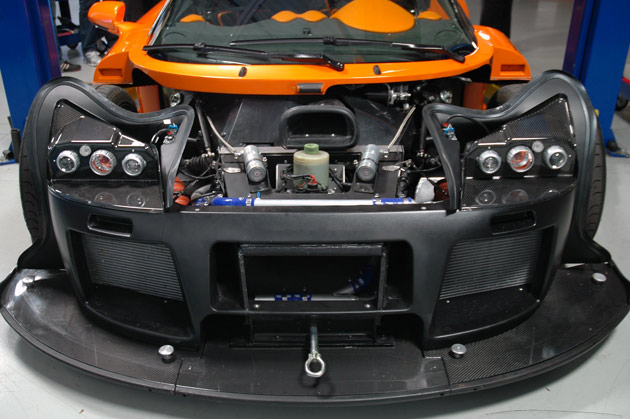
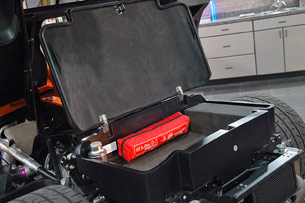
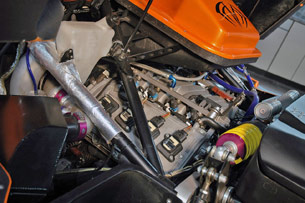
Behind the rear bulkhead is a center-mounted, 31.7-gallon gas tank, and behind that is the lightweight aluminum engine block. Although it comes from Audi, Gumpert – as with almost everything else on the car – develops it further and adds company-reworked elements to it, such as modified fuel injection, dry sump lubrication and an improved charge-air cooler. Oh, and there are those two K26 turbos from KKK. Base ratings are 650 horsepower and 627 pound-feet of torque, stepping up to 750 hp and 664 lb-ft for the Apollo S and topping off at 850 hp and 701 lb-ft on the race-track-only Apollo R.
On top of that engine is a little trunk, large enough for a carry-on bag and a few sundries. If you do buy an Apollo and use it to go shopping, we recommend you don't put chocolate back there.
Power from block to wheel moves through a synchronized, six-speed manual sequential transmission with a twin-plate clutch. Because it's a manual, the gearbox takes firm prods and pulls to work the lever – you don't just get a gearchange, you are rewarded with one. Buyers can spec their own transmission ratios, and further assistance in making use of them is provided by the adjustable traction control system. There is an optional F1-style paddle-shifting system available if that's how you roll. Excess power in the form of heat is run through a four-flow exhaust with a butterfly that allows manual bypass. The Germans have noise regulations, see...
So that's a fly-by of the nuts and bolts. But what happened when it came time to just fly?
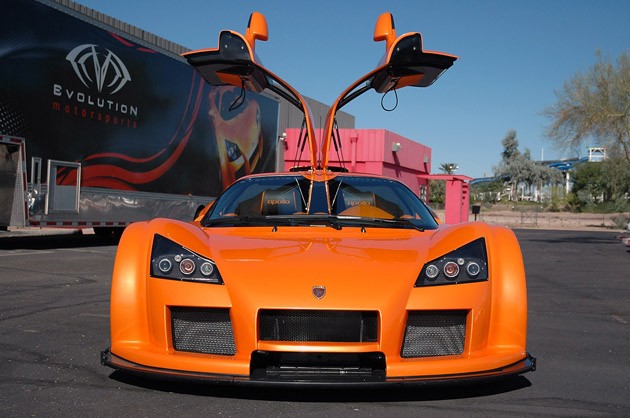
First came getting in, a maneuver that begins with raising the gullwing door and then engaging in a few seconds of appraisal with the same intensity that Kasparov uses to examine a chess board mid-game. Thankfully the Gumpert's Gambit doesn't require too much elasticity since race car drivers have been doing this for more than a century: remove the steering wheel, hands on the front and rear of the roof, hoist both feet in as you slide into the seat.
Quickly survey the cabin and note two-tone cross-stitched leather and Walter Rohrl's autograph, the Audi steering column stalks and electric mirror controls, the Audi vents that will soon be bathing you in cold air and the minimal, yet pleasingly, leather-wrapped center console with boost, gas, oil gauges, power window switches (the windows go almost completely down), a dial and screen to adjust the traction control. Also note the radio, which you can actually hear, but won't need at all.
Replace the steering wheel, then check out that seating position. This was where we encountered a little bit of the Apollo Magic. It put us in the most compact seating position we have ever experienced in any car, ever, and yet it wasn't the least bit uncomfortable. Sitting there, looking at our acutely-angled legs and thinking "We could almost eat M&Ms off our knees," we couldn't figure out why we weren't uncomfortable, but we weren't.
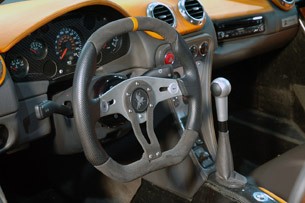
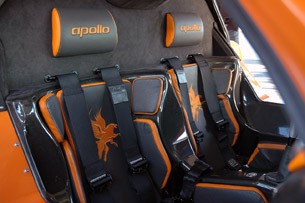
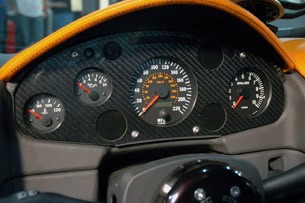
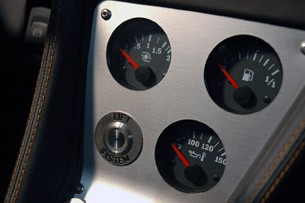
Strap into the four-point harness, make sure the car is in neutral, put the Gumpert (not Audi) key into the slot and start the engine. It's remarkably muted compared to what we expected, a theme that would recur. We had to turn it on several times and after the burst of throttle on ignition, the car settles into a burble we could've had a conversation around even in a tight, highly resonant space.
Pull the lever firmly, engage first and pull off. In a day of driving we never achieved the finesse required to smoothly work the clutch from a stop in first gear, but there was a good reason for it: Fischer told us the Apollo we were driving was a four-year-old development car with a clutch that had tens of thousands of kilometers on it and only needed a little adjustment. As far as we were concerned, the fact that the clutch worked as well as it did and was really no more fussy than on some other highly tuned cars that can't be raced, was impressive. In fact, we've had new-model press cars that didn't behave as well as a aging prototype race car with more than 25,000 miles on it. Speaking of which, that also might be why you notice the pictured Apollo looks a bit different than others – Gumpert been updating customer cars regularly.
If you do have the footwork to launch the Apollo properly, you could get the 2,645-pound car to 62 miles per hour in 3.2 seconds, and to 124 mph in 8.9 seconds. In less than nine seconds you can be going fast enough to drive upside-down, getting there more quickly in the Apollo than you will in a Viper SRT10 ACR, Corvette ZR1, Pagani Zonda F Clubsport, Ferrari Enzo and, well, every other car out there that you would race.
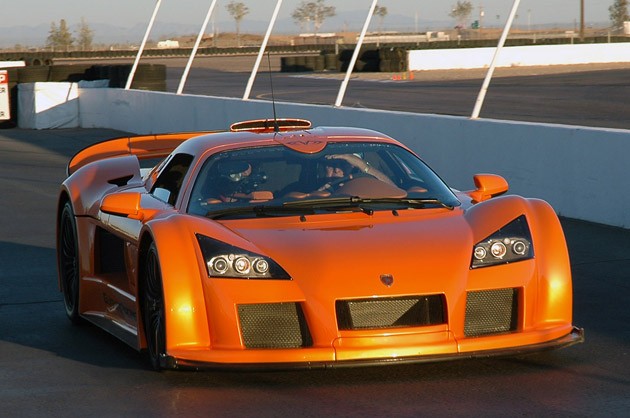
Once running in first, working the clutch and moving through the gears was no problem, and this is where we discovered the various muted aspects of the Apollo. The acceleration, as quick as it is, isn't a gut-punching thrust. The four turbos in the Bugatti Veyron spend a half second inhaling a tenth of the Earth's atmosphere and then they vaporize the car, Quantum Leap-like, to your desired speed. Hit the gas on the Apollo, on the other hand, and it uses that first half second to take off running – really, really quickly – but you can feel every bit of momentum gained as the turbos quietly whine and progressively feed the V8 heart.
The steering is meatily weighted, but doesn't induce any fatigue even after a couple hours of city driving. The suspension is resilient enough to subdue lane dots; in fact, you hear them more than feel them only because of the carbon-wrapped steel. You can power down the windows and let fresh air in. You can put a CD in – and hear it – while getting turn-by-turn directions to Coffee Bean. True, you can't stick your head out the window, but in every other way, the Apollo is a car. Like a Ford Fiesta.
No, not really like a Ford Fiesta, but we're making a point. It's street-legal manners are terrific, making it just as good at getting lunch as it is at lapping.
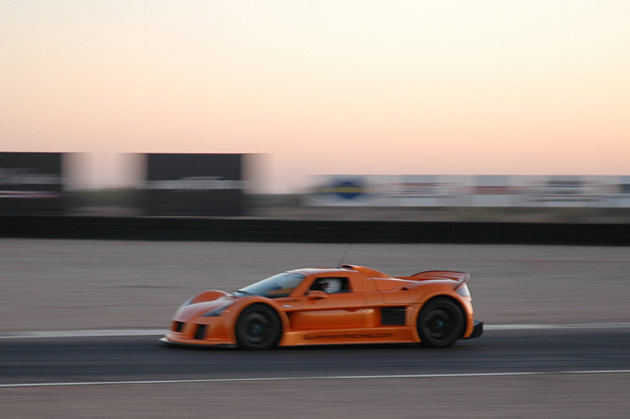
The only non-muted thing about the Apollo, on regular roads at least, is the braking. Carbon ceramic stoppers are so good now that Gumpert could have put a set on the Apollo without introducing a racer's compromise, but it didn't, going with four giant, vented discs and six-piston calipers all around. In this the Apollo shares a trait with the Veyron: you don't come to a stop in the Apollo. Regular speed modulation is on par with any other coupe or sedan, while emergency stops might make you black out. You think about stopping, you feel your foot begin to stab at the brake pedal, something traumatic happens, and then there you are in the middle of the street slowly realizing that you came to a complete stop three seconds ago. Sport Auto magazine did a 124-mph-to-zero braking test, coming to a stop in 4.5 seconds. The Apollo beat the magazine's other top performers, the Koenigsegg CCR, Ruf Rt 12, Porsche Carrera GT, Mercedes SLR McLaren, Pagani Zonda F and Ferrari 430 Scuderia. It's serious about the word "halt." And winning.
After spending about 30 minutes prepping, ("prepping" being visually inspecting the car and underbody, adjusting the suspension and changing the tire pressures), we headed to Bob Bondurant's facility for an afternoon of high speed runs.
On the track, all bets are off – and it was our neck that told us what we needed to know about Mr. Angry Apollo. Bondurant's chief instructor took us on two five-lap runs spaced about an hour apart. Our neck hurt at the end of each of them. Not a little bit, either – this wasn't just a twinge, it was the result of a high intensity neck workout. We've ridden on plenty of hot laps on plenty of tracks with plenty of drivers, and that's never happened before. Ever.
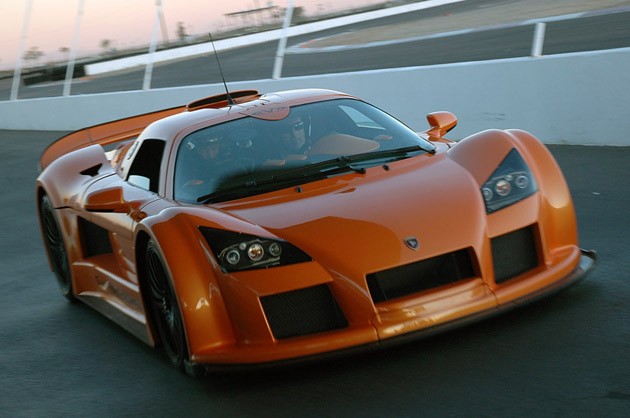
True, the course had a lot of tight turns – which actually didn't let the Apollo show its complete stuff – but it goes around them at rollercoaster speeds. In a closed-off space with colored corners, the Apollo is not a car, it's a 650-hp kart. No give, no mercy, no time to wait or waste. It's as if the car has an appointment in The Checkered Flag Dimension, and it will shuffle the physics around a bit, curve gravity and maybe add a little hyperspace to get you there before anyone else.
Back to Sport Auto, the braking test was part of a larger, eight-category superest that pitted the Apollo against the magazine's top six performers in each of those categories including lateral G, aero balance, 'Ring and Hockeheim lap times and dodging an obstacle. The Apollo won every category but two: It tied the Porsche GT3 in the obstacle test, and came in last for wet weather handling on its Michelin Cup tires. But it rocked 1.5g on the lateral course, beating the BMW M3 CSL (!) by .10g and explaining our neck issues. Even though it scored a 1 out of 10 for wet handling and was hobbled by a 4 out of 10 for everyday practicality (don't even get us started on that nonsense), it came in third in the overall. That's another podium finish...
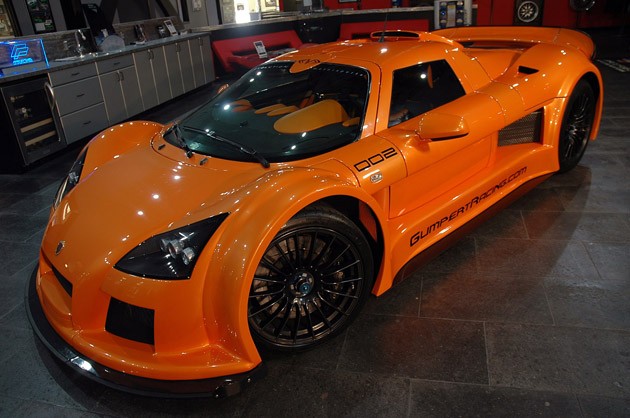
To the last question: is the Apollo gorgeous? We're going to go ahead and say yes, while admitting that we don't mean that in the traditional way. As a purely aesthetic piece, there are prettier cars. But as a driver's and a racer's machine, there is nothing more beautiful anywhere.
Except for this final fact: The Apollo will be officially sold in America by the awesome gents at Evolution MotorSports in Phoenix. It'll take about $600,000 to make your track-day dreams come true, but believe us, if you want one car for winning on Sunday and cruising on Monday, your money will never be better – nor more efficiently or aerodynamically – spent.
Photos by Jonathon Ramsey / Copyright ©2010 Weblogs, Inc.
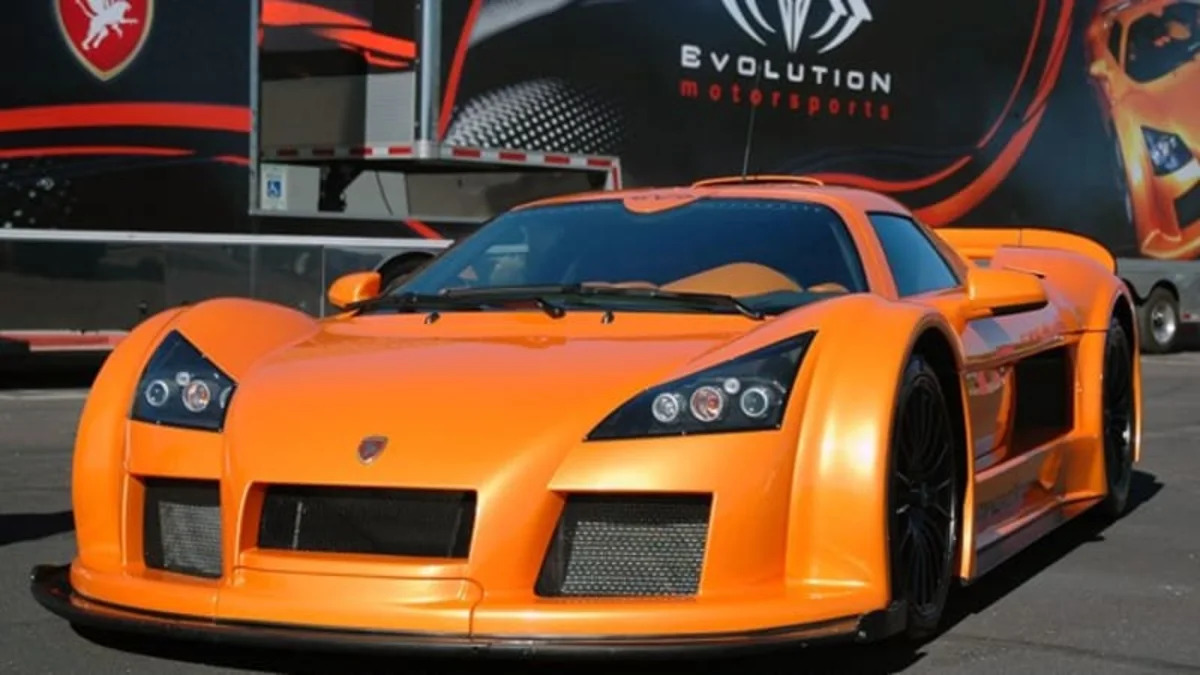
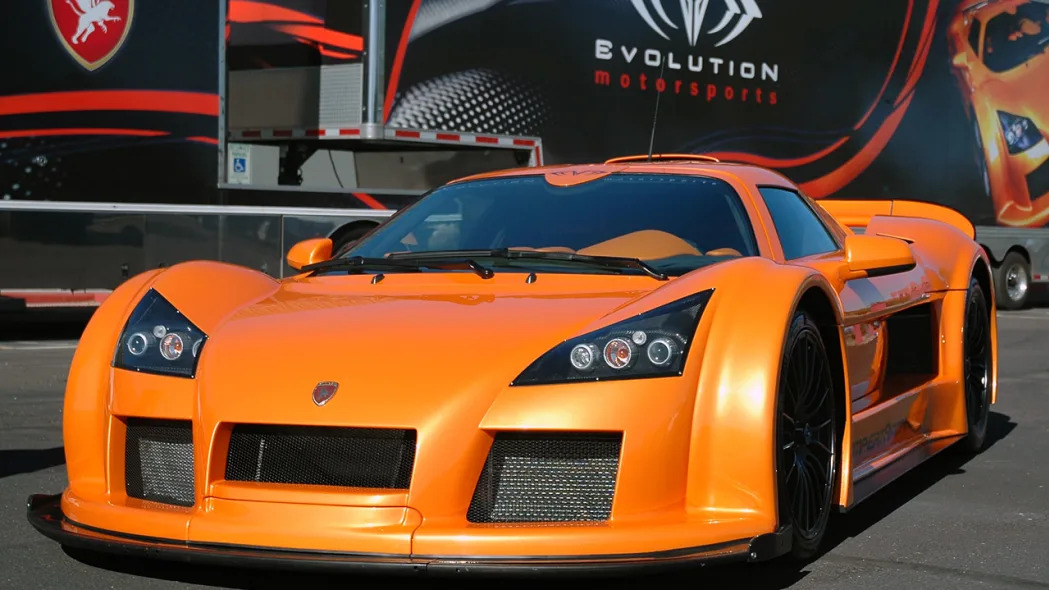

Sign in to post
Please sign in to leave a comment.
Continue